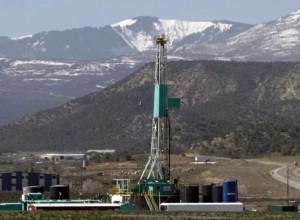Imagine you’re hiking through the foothills of the Appalachian Mountains in rural Pennsylvania. The Sun is shining, the birds are chirping, and more than a mile below the ground you stand on is a network of natural gas wells producing vast quantities of natural gas. At the surface, you’d never know it. This is the advantage advances in horizontal drilling technology have brought to the table, dramatically increasing natural gas production in the United States while greatly reducing the surface footprint of drilling operations.
The energy renaissance occurring in the U.S. oil and natural gas industry is the result of two key technological advancements: the combination of horizontal drilling and hydraulic fracturing. Although hydraulic fracturing gets most of the media attention, horizontal drilling is just as important because it allows drillers to drill straight down for several thousand feet and then turn the well bore horizontally, like an upside-down bendy straw. That increases the well’s exposure to the resource-rich rocks below and allows drillers to extract oil and natural gas from rock formations that were once too costly to develop.
Horizontal drilling also enables oil and gas producers to drill multiple wells in different directions from the same drilling pad. This maximizes the amount of natural resources they can recover while minimizing the footprint of the drilling operations needed to access the natural resources we depend on every day. It also means energy companies can continue to save families hundreds of dollars per year on their natural gas bills, create thousands of living-wage jobs, and do so while minimizing the impact on wildlife habitats and property owners.
Vertical wells, also known as conventional wells, in Pennsylvania use about one acre of land per well. Multi-well pads may use more acres at a particular drill site, but they have a much smaller total footprint because they involve drilling multiple wells from the same well pad.
In fact, a recent study found in recent years, a majority of new wells for unconventional gas operations were drilled on multi-well pads. On average, each of these pads contains five wells. Drilling would have disturbed between two and four times more land surface if drillers had used single-well pads. Multi-well pads also had fewer environmental violations per well, and they recycled more water on-site than single pad wells.
Drilling multiple wells is also a win for energy producers, because concentrated operations require less infrastructure, incur lower transportation costs for moving equipment from one drilling site to the next, and allow construction of fewer well pads.
According to the U.S. Energy Information Administration, moving a drilling rig between two well sites previously involved disassembling the rig and reassembling it at the new location, processes called “rigging down” and “rigging up,” even if the new location was only a few yards away. Today, by contrast, a drilling pad may have five to 10 wells, which are horizontally drilled in different directions, spaced fairly close together at the surface, inspiring energy companies to invent hydraulic walking or skidding systems for their rigs.
Advancements in multi-well drilling pads are a good example of the free market reducing the impact the energy industry has on the environment; producers want to be as efficient as possible, which in turn reduces the processes’ impact on the environment. This advancement has allowed the United States to maximize its energy production while minimizing its environmental footprint, unlike solar farms that span thousands of acres and are arguably more efficient as songbird rotisseries than as a source of electricity.





